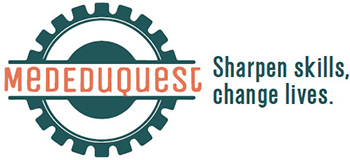Is there a better material for Surgical residents practicing instand on pig skin?
Surgical residents often practice various surgical techniques on simulated materials, commonly using pig skin, as it provides a texture and consistency that closely resembles human skin. This practice is valuable for learning skills such as suturing, incision, and wound closure before working on human patients. Pig skin is readily available, affordable, and is considered a suitable substitute for human skin in many aspects.
While pig skin is a widely accepted training material, there are alternative materials and simulators that can be used in surgical training:
Synthetic Models: There are synthetic materials specifically designed for surgical training, such as silicone-based models that mimic the look and feel of human skin and underlying tissue. These can be more expensive but offer consistent quality and can be reused.
Cadaveric Tissue: In some advanced training programs, cadaveric human tissue may be used, providing the most realistic experience. Cadaveric tissue can be an excellent option for training, but it is more expensive and requires specialized facilities and procedures.
Virtual Reality (VR) Simulators: Advancements in technology have led to the development of VR simulators that allow surgical residents to practice their skills in a virtual environment. While they don’t offer the tactile feedback of real tissue, they can provide valuable training opportunities.
The choice of material or simulator depends on the specific goals of the training program, available resources, and the preferences of the instructors and learners. Pig skin remains a commonly used and effective option for many surgical training programs, but the availability of alternatives has expanded, allowing for more choices based on the needs of the trainees and the educational institution.
From recent reserch, most of the residents were able to perform all suturing checklist tasks correctly when using the silicone model(suture pads )that mimic human skin. Also, silicone-based skin model was scent-free, vegan friendly, was not a biohazard and likely posed no ethical or religious conflicts.
The researchers noted“This bodes well for future ability to perform well in live patients, who have skin of various thicknesses and elasticities. Residents who can utilize simulated-learning opportunities to practice and hone their skills are better able to protect their patients’ health from harm and provide safe, accessible health services and procedures in an efficient way,”His study inspires developers to create refined synthetic models that closely mimic the features and handling of real skin. Such models will afford learners the best possible simulated experience to enhance their skills and ultimately provide outstanding care for their patients.
Choose the right suture products, then Surgical residents can perform surgical training and practice suture techniques at home or at school, or anywhere they will.

